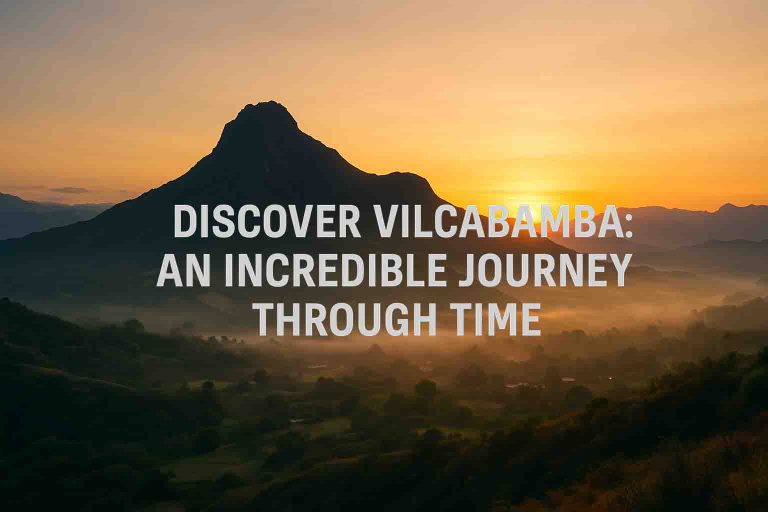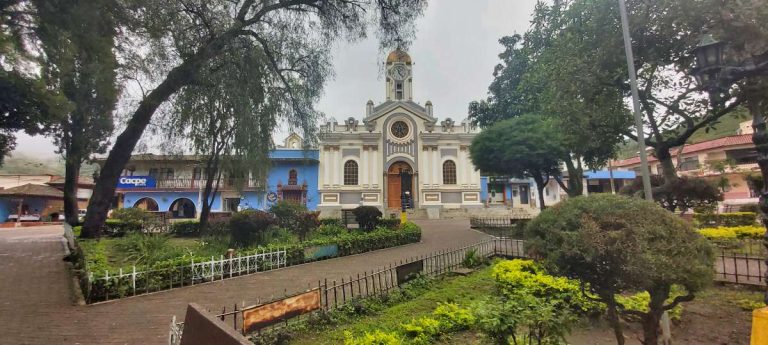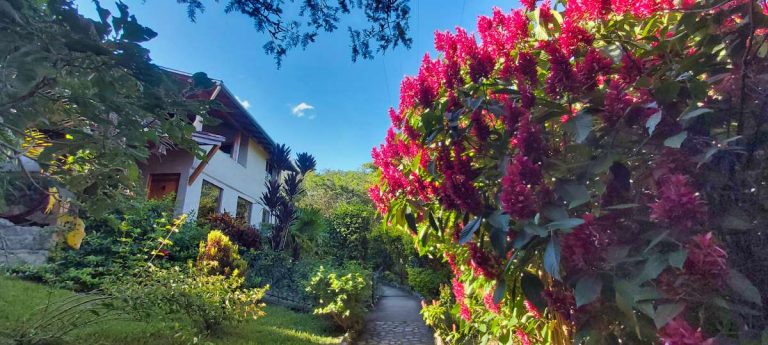Explore Podocarpus National Park: Trails and Wildlife 2025
Approximate Reading Time – 22 minutes
When exploring Podocarpus National Park, visitors can enjoy hiking along diverse trails such as Los Miradores, birdwatching to spot some of the park’s nearly 600 types of birds, and experiencing the unique ecosystems of cloud forests and high-altitude páramo. Additionally, there are ranger stations and free campgrounds within the park for those interested in overnight stays amidst the natural beauty.
Podocarpus National Park is a hidden treasure of Ecuador, offering lush forests, rare wildlife, and breathtaking trails that attract nature enthusiasts from around the world. As you traverse through its diverse landscapes, you will discover a sanctuary where towering podocarp trees mingle with vibrant birdlife, all set against a backdrop of misty mountains.
For those eager to fully embrace this natural wonder but wary of its challenges, preparation is key.
This guide combines research with local insights to provide you with trail maps, wildlife spotting tips, safety guidelines, and practical advice. By diving into this resource, you are not just planning a hike; you are ensuring an enriching and secure adventure in one of South America’s most captivating parks.
Getting to Podocarpus National Park
Whether you’re an avid hiker or simply someone who enjoys connecting with nature’s wonders, accessing Podocarpus National Park is an essential part of the experience. The park is conveniently reachable from two primary entrances: one near Loja and the other closer to Zamora. For those seeking convenience and ease, public buses from cities like Loja or Vilcabamba are available to ferry travelers to and from the park. However, for enhanced flexibility, renting a car might be the most suitable option, especially if you intend to explore multiple entrances and trails within the park.
A cost effective alternative is to hire a taxi, especially if you are coming from Vilcabamba as car rental companies do not exist there. Traveling by public bus provides an affordable and eco-friendly means of reaching the park. Buses operate regularly from Loja and Vilcabamba, offering a convenient option for visitors looking to immerse themselves in the stunning natural beauty of Podocarpus National Park without the hassle of driving or navigating unfamiliar roads.
While this mode of transportation may limit your exploration to designated drop-off points, it presents an opportunity to interact with locals and fellow travelers during the journey, adding a layer of cultural enrichment to your adventure. On the other hand, renting a car provides unparalleled freedom and flexibility for travelers keen on exploring multiple entrances and trails within the park. This option allows you to set your own schedule and venture off the beaten path without being reliant on fixed bus timetables or limited drop-off locations.
Keep in mind that while driving may offer more autonomy, it also comes with responsibilities such as navigation, fuel costs, and adherence to local traffic regulations. Let’s discuss specific directions to each entrance.
Directions
If you’re heading to Podocarpus National Park from Loja, there are two main entrances with distinct paths leading to captivating natural wonders. To access the Cajanuma entrance, which serves the western section of the park, travelers should head south on the E50 highway from Loja going towards Vilcabamba.
Follow signs placed along the route that will guide you to this entryway. Depending on your method of transport (car the shortest time and bus the longest) and of course traffic, it could be anywhere from 25 minutes to 1 1/2 hours. This path offers access to a variety of scenic trails and viewpoints, allowing visitors to embark on unforgettable hiking excursions through diverse landscapes.
For those journeying toward the Bombuscaro entrance located near Zamora, a different route must be taken. From Loja, travelers should take the E45 highway eastbound until they reach Zamora. After arriving in Zamora, follow signs directing you straight to the entrance. The road leading to this entry point provides marvelous views of the surrounding terrain, enhancing the anticipation for a remarkable outdoor adventure within the heart of nature. Depending on your method of transport and again traffic, it could take anywhere from 1 1/2 hours by car to 2 1/2 hours by bus from Loja.
For those traveling from Vilcabamba, the Cajanuma entrance would be the closest and easiest to access. Driving time by car or taxi is approximately 45 minutes and by local bus could be 1 1/2 hours again depending on traffic, number of stops etc.
If you are going to the Bombuscaro entrance, expect to be driving 2 1/2 hours by car and by bus at least double that as you would have to go to Loja, transfer buses and then continue to Zamora and from there to the park entrance. The bus time is difficult to measure as they will stop just about anywhere along the route to pick up and drop off passengers, so enjoy the scenery. It’s part of the reason you’re visiting this magical land.
It is advisable to plan your route carefully before setting out on your journey to ensure a smooth travel experience. Consider consulting maps or GPS navigation systems beforehand and familiarize yourself with local landmarks and intersections along your chosen route. By doing so, you can navigate confidently while appreciating the scenic beauty that Ecuador has in store on your way to Podocarpus National Park.
With these essential insights into transportation options and precise directions at your fingertips, you are well-equipped to embark on an enriching adventure through Podocarpus National Park’s mesmerizing landscapes.
Navigating Trails and Tracks
Podocarpus National Park is a treasure trove of hiking opportunities, with an array of trails that cater to hikers of all skill levels. Whether you’re an experienced trekker or seeking a leisurely stroll in nature, the park has something for everyone.
Main Trails

One of the most popular trails in the park is the Los Miradores trail, which begins at the Cajanuma ranger station. This 4-hour hike takes you through breathtaking cloud forests, featuring an otherworldly atmosphere shrouded in mist. Be prepared for muddy and slippery conditions, but don’t worry – there are ropes available to provide support along the way.
It’s a strenuous hike, but the stunning views make it more than worth it. If you’re traveling with young children or prefer an easier route, the Bombuscaro sector offers the Ponderosa Waterfall Trail. This scenic walk is ideal for families and provides a more relaxed hiking experience.
Each trail has its own unique characteristics and challenges, so it’s essential to choose one that aligns with your abilities and preferences. The Los Miradores trail offers a thrilling adventure for seasoned hikers, while the Ponderosa Waterfall Trail allows families to appreciate the park’s beauty in a more accessible manner.
Trail Maps and Guides
Acquiring trail maps from ranger stations or online before embarking on any hike within the park is crucial. These maps provide valuable information about terrain, elevation, and potential hazards along the trails. For those venturing into unfamiliar or more demanding routes, hiring a local guide is highly recommended. Local guides possess extensive knowledge of the park’s ecosystems and can offer insights into the flora and fauna that enriches the hiking experience.
Additionally, they play a crucial role in ensuring the safety of hikers by guiding them through challenging portions of the trails and providing assistance when needed. If you’re traveling to the Cerro Toledo Peak, you will definitely want experienced and knowledgeable guides for that expedition. Check out Mauna Expeditions to see their programs.
Experienced guides not only enhance safety but also add depth to your exploration by sharing captivating stories about the park’s history and biodiversity. Their expertise transforms an ordinary hike into an educational adventure, allowing visitors to develop a profound appreciation for Podocarpus National Park’s ecological significance. They will know where to see wildlife, the best flora and fauna and all sorts of information to make your experience truly one to remember.
With a diverse range of trails to suit all abilities and hiring local guides to enhance your experience, navigating through Podocarpus National Park will be an enriching adventure for hikers of all levels.
Complete Trail Guide to Podocarpus National Park Hikes
Table Format
| Trail Name | Sector | Difficulty | Distance | Duration | Key Highlights |
|---|---|---|---|---|---|
| Spectacled Bear Trail (Sendero Oso de Anteojos) | Cajanuma | Easy | 400m (0.25mi) | 15 min | Cloud forest loop, diverse flora and fauna |
| Cloud Forest Trail (Sendero Bosque Nublado) | Cajanuma | Easy | 700m (0.43mi) | 20 min | Dense vegetation, scenic lookout point |
| Los Miradores Loop Trail | Cajanuma | Moderate-Difficult | 5km (3.1mi) | 4-5 hrs | Panoramic valley views, cloud forest to páramo |
| Lagunas del Compadre Trail | Cajanuma | Challenging | 14.5km (9mi) one-way | 2 days | Glacial lakes, mountain tapir habitat |
| Cascada La Poderosa | Bombuscaro | Easy | 500m (0.31mi) | 30 min | Rainforest trail, waterfall views |
| Higuerones Trail | Bombuscaro | Easy | 2km (1.24mi) | 1-2 hrs | Orchid garden, riverside walk |
| El Mirador | Bombuscaro | Moderate | 1km (0.62mi) | 1 hr | Mountain vistas, Zamora city views |
Detailed Trail Guide by Sector
Cajanuma Sector Trails (Loja Province)
- Spectacled Bear Trail (Sendero Oso de Anteojos)
- Difficulty Level: Easy
- Trail Length: 400 meters (0.25 miles)
- Hiking Time: 15-minute loop
- Trail Features:
- Introductory cloud forest experience
- Educational flora and fauna displays
- Perfect for beginners and families
- Well-maintained path system
- Cloud Forest Trail (Sendero Bosque Nublado)
- Difficulty Level: Easy
- Trail Length: 700 meters (0.43 miles)
- Hiking Time: 20-minute loop
- Trail Features:
- Immersive cloud forest environment
- Strategic lookout point
- Dense native vegetation
- Bird watching opportunities
- Los Miradores Loop Trail
- Difficulty Level: Moderate to Difficult
- Trail Length: 5 kilometers (3.1 miles)
- Hiking Time: 4-5 hours
- Trail Features:
- Cloud forest to páramo transition
- Panoramic views of three valleys
- Challenging terrain variations
- Notable wildlife spotting opportunities
- Lagunas del Compadre Trail
- Difficulty Level: Challenging
- Trail Length: 14.5 kilometers (9 miles) one way
- Duration: 2-day trek
- Trail Features:
- Remote glacial lakes
- Mountain tapir habitat
- Camping permitted
- Best hiked November-December
Bombuscaro Sector Trails (Zamora Province)
- Cascada La Poderosa
- Difficulty Level: Easy
- Trail Length: 500 meters (0.31 miles)
- Hiking Time: 30 minutes
- Trail Features:
- Accessible waterfall view
- Rainforest ecosystem
- Family-friendly path
- Natural water features
- Higuerones Trail
- Difficulty Level: Easy
- Trail Length: 2 kilometers (1.24 miles)
- Hiking Time: 1-2 hours
- Trail Features:
- Orchid garden showcase
- Bombuscaro River views
- Prime bird watching spots
- Diverse plant species
- El Mirador
- Difficulty Level: Moderate
- Trail Length: 1 kilometer (0.62 miles)
- Hiking Time: 1 hour
- Trail Features:
- Mountain panoramas
- Zamora city overlook
- Strategic viewpoint
- Photo opportunities
Tips for Safe Trekking
When you’re preparing to explore the wondrous landscapes of Podocarpus National Park, it’s essential to prioritize safety above all else. Here are a few practical tips to keep in mind as you embark on your trekking adventure.
Essential Gear
Before setting off on your hike, it’s vital to prepare with the right gear. The terrain can often be wet and uneven, so sturdy, waterproof hiking shoes and boots are a must-have to provide support and protect your feet from any unexpected water or mud. Additionally, the region is known for frequent showers, making it crucial to pack a reliable rain jacket to shield yourself from changing weather conditions.
Consider carrying a lightweight backpack with essentials such as a first-aid kit for any minor injuries or discomfort, and high-energy snacks to keep your stamina up as you traverse the trails. Depending on your thoughts, take water purification tablets to ensure access to clean drinking water however the water that filters from these mountains is some of the most mineral rich waters in the world and supplies many of the surrounding towns water needs.
Safety Precautions
Safety should always be a top priority when venturing into natural environments, especially in remote areas like those found in Podocarpus National Park. Before starting your hike, it’s important to inform someone of your itinerary and expected return time. This simple precaution ensures that there’s a designated point of contact who can take action if you don’t return as planned.
Furthermore, sticking to marked trails is an essential safety measure. Straying off established paths can lead to disorientation and increase the risk of encountering hazardous terrain or local wildlife in unfamiliar surroundings. It’s also advisable to avoid trekking alone, particularly in remote areas of the park. Having a companion not only enhances safety but also enriches the experience by allowing shared enjoyment of the breathtaking natural beauty of the park.
Wildlife Awareness
As you journey through the park, be mindful of local wildlife, including snakes and insects. While encounters with wildlife are rare, it’s crucial to know how to react if you do come across them. Understanding basic wildlife behavior and keeping a respectful distance minimizes the risk of unintended interactions and ensures the safety of both visitors and animals.
These tips don’t just contribute to your personal safety but also help preserve the natural environment around you. By keeping these tips in mind and preparing accordingly, you can make the most of your trekking adventure while prioritizing safety and responsible exploration in Podocarpus National Park.
Wildlife Watching Opportunities
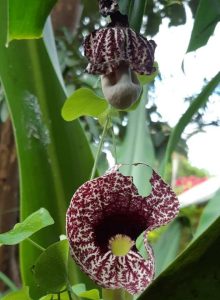
Podocarpus National Park is a nature lover’s dream, teeming with an extraordinary abundance of wildlife. Whether you’re an avid birdwatcher or on the lookout for breathtaking mammal sightings, the park has a wealth of experiences to offer.
Bird Watching
One of the most thrilling activities in the park is bird watching. With nearly 600 recorded species, birdwatchers are in for a treat. Keep an eye out for striking birds like the Andean Cock-of-the-rock, various toucans, and rare hummingbirds. These magnificent creatures adorn the lush greenery with their vibrant plumage, providing a visual spectacle that’s unique to this natural habitat. For the best viewing opportunities, consider venturing out during the early mornings or late afternoons when many of the birds are most active.
It’s important to remember that patience is key when it comes to bird watching. Find a quiet spot, observe patiently, and be prepared to be amazed by the diversity and beauty of these winged wonders.
Mammal Spotting
While exploring the park’s serene trails, keep your eyes peeled for elusive mammals such as jaguars, spectacled bears, and the mountain tapir. These sightings can be incredibly rewarding, offering a rare glimpse into the lives of these majestic creatures. To improve your chances of spotting these elusive animals, make sure to stick to quieter trails, maintain silence as much as possible, and use binoculars to scan the surrounding area discreetly.
Remember to respect these animals’ space and refrain from any actions that may disturb or startle them. Observing them from a distance allows you to witness their natural behavior without causing any disruption to their environment.
Whether you’re captivated by the diverse avian population or eager to catch a glimpse of these awe-inspiring mammals, Podocarpus National Park provides a remarkable setting for immersive wildlife encounters that will surely leave a lasting impression.
Now immerse yourself in the fascinating world of plant life within Podocarpus National Park as we uncover its incredible biodiversity and botanical wonders.
Diverse Plant Life
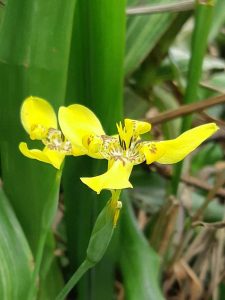
Imagine walking through a lush, green forest, with sunlight filtering through towering trees, casting playful shadows on the forest floor. This is the experience awaiting you in Podocarpus National Park. The park is a botanical wonderland, boasting around 4,000 plant species, including the rare and majestic Podocarpus conifer and numerous endemic orchids that add a splash of vibrant color to the landscape.
The Unique Flora of Podocarpus
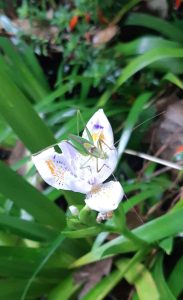
Take a hike along trails like Oso de Anteojos, where you can immerse yourself in the enchanting world of moss-covered trees, towering giant ferns, and an array of unique flowering plants. It’s like stepping into a storybook, surrounded by an abundance of plant life unlike anywhere else. I can assure you that pictures and / or videos will not do justice for what you are about to experience.
Picture yourself gazing in wonder at vibrant orchids hanging delicately from tree branches, their colors a feast for the eyes. You might also stumble upon the iconic Podocarpus conifer – its ancient, sturdy presence standing as a testament to the park’s ecological diversity.
Botanical Insights at the Reinaldo Espinosa Botanical Garden
To gain deeper insights into this botanical wonderland, a visit to the Reinaldo Espinosa Botanical Garden near Loja is highly recommended. Here, visitors can take an educational journey through the region’s rich plant life. The garden offers a remarkable opportunity to identify various plant species that you might encounter while trekking through the park’s trails.
Imagine walking among exquisitely curated displays of unique flora and learning about their significance within the park. The Reinaldo Espinosa Botanical Garden provides an aesthetically pleasing and educational lens through which to view the abundant plant life that makes Podocarpus National Park such a distinct natural gem.
With its vast variety of flora and botanical wonders, Podocarpus National Park stands as a sanctuary for nature enthusiasts, providing an enriching and awe-inspiring experience at every turn.
River and Mountain Highlights
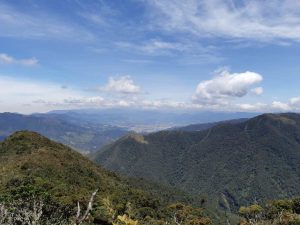
Two separate viewpoints from inside Podocarpus National Park

The Bombuscaro River is a tranquil haven nestled in the stunning Podocarpus National Park. Accessible from the Bombuscaro entrance, this picturesque river isn’t just a beautiful sight—it offers serene spots for picnicking. As you relax by the riverbanks, you might catch glimpses of graceful waterbirds and vibrant aquatic plants that call this area home.
While the allure of a refreshing swim in the river might be tempting, exercise caution as water conditions can vary, and potential wildlife encounters are a possibility. It’s essential to respect the natural habitat of the park and approach any interactions with wildlife with care and discretion.
The Magnificent Cerro Toledo Peak

The towering Cerro Toledo peak in Podocarpus National Park offers a challenging but a rewarding trek for more experienced hikers. This strenuous hike promises panoramic views that will leave you breathless—not just from the exertion, but also from the incredible vistas of the Andean landscape spread out before you.
Nevertheless, it’s crucial to note that this hike is not for the inexperienced or the ill-prepared. It demands good physical condition, proper trekking gear, and an awareness of the potential risks involved. The rugged terrain and steep inclines require cautious navigation and a respectful appreciation for the natural forces at play.
Ultimately, these river and mountain highlights offer unmatched natural beauty and adventure; however, it’s important to approach them with mindfulness and respect for the environment to ensure that these captivating features remain pristine for generations to come.
Venturing deeper into Podocarpus National Park, there are numerous sights that promise to awe and inspire. Let’s now turn our attention to these remarkable destinations within the park.
Noteworthy Sights to Visit
As you venture into Podocarpus National Park, certain sights stand out and simply cannot be missed. One such gem is the Cascada la Chismosa waterfall, a hidden wonder nestled in nature’s embrace. To reach this picturesque location, the best starting point is from the Bombuscaro River entrance. The journey to this scenic waterfall promises an enchanting experience, rewarding hikers with the captivating beauty of cascading waters and lush greenery.
It’s important to prepare adequately for this trek by packing essentials such as water, snacks, and appropriate footwear. The trail to Cascada la Chismosa may involve varying terrain, so sturdy hiking shoes are invaluable to ensure a safe and enjoyable adventure.
Puerta de la Ciudad in Loja
For those seeking a blend of historical and cultural enrichment amid their nature-centric escapade, a visit to Puerta de la Ciudad in Loja is a must. By including this intriguing stop in your itinerary, you can seamlessly weave together nature exploration within the park and city-based discoveries in Loja. This unique juxtaposition adds depth to your journey, offering insights into both natural wonders and local heritage.
Remember: Take some time before or after your trek to explore Puerta de la Ciudad for a rich infusion of historical context.
Visitor Facilities
Now, let’s look at the visitor facilities within the park. While exploring this vast expanse of nature, having access to essential amenities and informational resources greatly enhances the overall experience. Modest yet functional visitor centers are strategically positioned throughout the park, serving as valuable hubs for park-goers. These centers provide fundamental amenities, insightful displays brimming with information about the park’s flora and fauna, as well as knowledgeable guides who are adept at enriching your understanding of this biodiverse ecosystem.
Imagine immersing yourself in these centers, gathering valuable knowledge about the park’s diverse wildlife or gaining insider tips on the most breathtaking trails to explore. Engaging with knowledgeable guides can offer an entirely new perspective on navigating and appreciating the expanse of the park.
Nearby Lodges and Eco-Hostels

For those planning multi-day excursions or seeking added comfort during their visit, staying at nearby lodges or eco-resorts is an appealing option. These accommodations not only offer convenient access to the park but also provide additional comfort and relaxation after a day packed with exploration and adventure.
Quick Tip: Prioritize choosing accommodation that aligns with your expected level of comfort and convenience for an optimal experience. I personally recommend Eco-Resort Izhcayluma in Vilcabamba. After a tough day on the trails, there’s nothing like coming home to a massage to soothe those well used muscles, a relaxing dip in the pool or a cold beer.
Top it off with an excellent meal, good company and an extremely comfortable bed and I know you won’t be disappointed. Just be sure to book that massage before you leave. Explore Eco-Resort Izhcayluma a little further in the following post Eco-Resort Izhcayluma: Experience The Magic of Ecuador’s Valley of Longevity.
By considering these noteworthy sights to visit and utilizing visitor facilities effectively, visitors can enhance their journey through Podocarpus National Park, guaranteeing a seamless fusion of natural marvels, cultural encounters, and comfortable lodging options.
Podocarpus National Park provides an extensive tapestry of natural splendor intertwined with rich historical contexts – an ideal haven for hiking enthusiasts seeking diverse experiences.
Protecting This Special Place
-
Establishment and UNESCO Recognition: Podocarpus National Park was established in 1982. There are varying reports regarding its designation as a UNESCO Biosphere Reserve; some sources indicate it was recognized in 2007, while others mention 2010. This recognition highlights the park’s exceptional biodiversity.
-
Environmental Threats: The park faces significant challenges, including deforestation due to agricultural expansion, illegal logging, and notably, illegal mining activities. Recent analyses have shown a 125% increase in mining deforestation along the Loyola River within the park between 2023 and 2024. You can read the article from Global Conservation – Mission Against Illegal Mining In Podocarpus National Park, Ecuador GC Mission Against Illegal Mining In Podocarpus National Park, Ecuador
-
Río Bombuscaro: The Río Bombuscaro is one of several vital water sources originating from the park, contributing to the region’s water supply.
-
Conservation Efforts: Supporting eco-friendly lodging and responsible tour operators can aid local conservation. Organizations like Naturaleza y Cultura Internacional work towards preserving Ecuador’s natural landscapes. Additionally, the World Land Trust collaborates with local partners to protect critical ecosystems in Ecuador.
There are ways each of us can make a positive impact. By choosing eco-friendly lodging and tour operators committed to responsible tourism, we support local conservation efforts. Donations to organizations dedicated to the preservation of this special area, like Naturaleza y Cultura, can help combat deforestation. For those interested in land conservation, consider contributing to the World Land Trust (source), an international organization actively involved in safeguarding ecosystems in Ecuador. Located in the northern Andes, the park plays a crucial role in the conservation of this important ecosystem.
Conclusion
Podocarpus National Park stands as a testament to Ecuador’s incredible biodiversity and natural beauty. From its cloud-forest shrouded peaks to its vibrant wildlife and extensive network of trails, the park offers something for every nature enthusiast. Whether you’re an avid birdwatcher seeking to spot some of the park’s 600 bird species, a hiker eager to tackle the challenging Lagunas del Compadre trail, or simply a nature lover wanting to experience one of South America’s most pristine ecosystems, Podocarpus delivers an unforgettable experience.
As visitors, we have the responsibility to preserve this ecological treasure for future generations. By following park guidelines, supporting local conservation efforts, and practicing responsible tourism, we can help ensure that Podocarpus National Park continues to thrive as a sanctuary for countless species and a destination for nature lovers worldwide.
For those planning their visit, remember that proper preparation, respect for the environment, and engagement with local guides can transform a simple park visit into an extraordinary adventure in one of Ecuador’s most remarkable natural wonders. Whether you’re exploring for a day or embarking on a multi-day trek, Podocarpus National Park promises memories that will last a lifetime.


